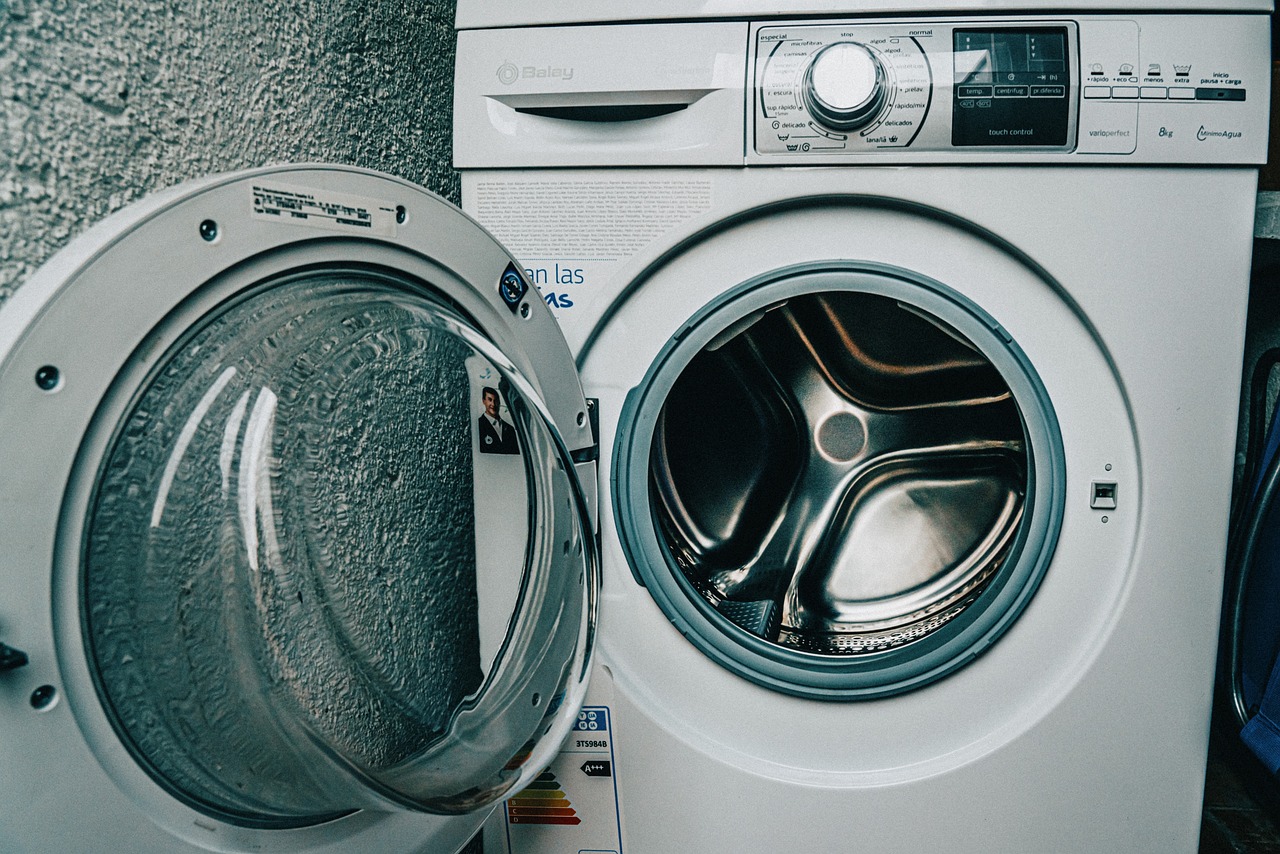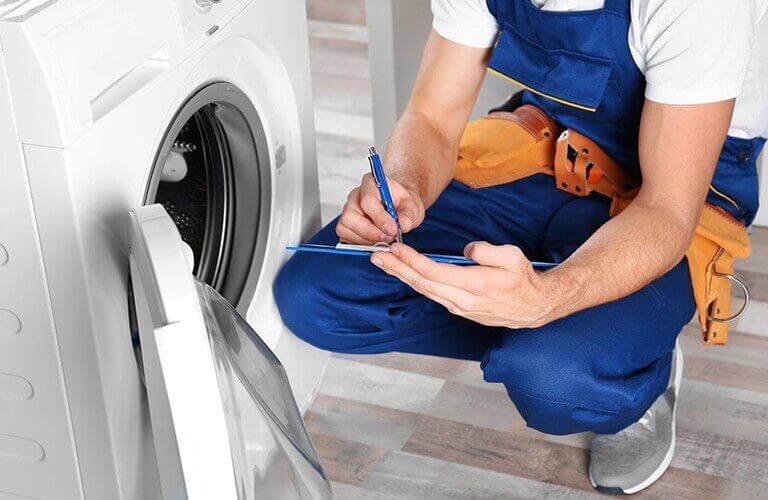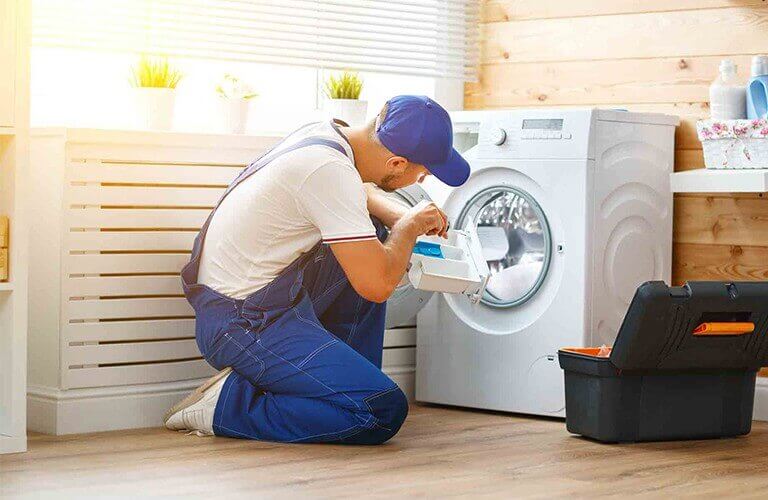A malfunctioning washing machine can disrupt even the most organised household routine. One moment, everything is running smoothly, and the next, you’re faced with a drum full of water and laundry that refuses to spin. When this happenfs, the immediate question is: how much will it cost to fix?
If you are dealing with unusual noises, drainage issues, or a machine that won’t start, understanding the potential repair costs can help you make an informed decision. Should you repair your current appliance, or would replacement be the more practical option?
This guide will help you understand what you’ll pay for washing machine repair in Brisbane and whether it’s worth fixing that temperamental appliance.
What’s the Average Washing Machine Repair Cost in Brisbane?
Most Brisbane residents can expect to pay between $140 and $400 for a washing machine repair in 2025.
But that range is pretty broad because washing machines are complex beasts with lots of potential issues. A simple lid switch replacement might cost you $180, while a new motor could set you back $550 or more.
Breakdown of Common Washing Machine Repairs in Brisbane
| Repair Type | Average Cost Range | Time Required | Difficulty Level |
| Lid switch replacement | $180 – $280 | 30 mins – 1 hour | Simple |
| Door seal/gasket replacement | $280 – $480 | 1 – 2.5 hours | Moderate |
| Pump replacement | $320 – $580 | 1.5 – 2.5 hours | Moderate |
| Motor replacement | $550 – $950 | 2 – 4 hours | Complex |
| Belt replacement | $200 – $350 | 1 – 2 hours | Simple |
| Drum bearing replacement | $650 – $1200 | 4 – 7 hours | Very Complex |
| Control board/PCB repair | $350 – $700 | 1.5 – 3 hours | Moderate to complex |
| Inlet valve replacement | $200 – $380 | 1 – 2 hours | Simple |
| Shock absorber replacement | $280 – $500 | 1.5 – 2.5 hours | Moderate |
| Agitator repair | $220 – $450 | 1 – 2.5 hours | Moderate |
How Much Do People Charge to Fix a Washing Machine?
Here’s what goes into your washing machine repair bill in Brisbane:
Call-out/diagnostic fee: Expect to pay between $90 and $165 for a technician to come out and diagnose the problem. Most reputable companies will deduct this from your final bill if you proceed with the repair.
Labour charges: Brisbane technicians charge $110-165 per hour. Front-loader repairs cost more than top-loaders due to increased complexity.
Parts and materials: This is where costs vary wildly. A simple belt might cost $40-70, while a new motor or drum could be $300 – 600+ for the part alone.
Emergency or weekend rates: Need your machine fixed on a Saturday afternoon? Expect to pay a premium of 30-100% more than standard rates.
Cost Comparison by Washing Machine Type
| Machine Type | Average Repair Cost | Common Issues | Parts Availability |
| Top loader | $180 – $500 | Agitator, lid switch, pump | Excellent |
| Front loader | $280 – $650+ | Door seal, bearings, pump | Good |
| Washer-dryer combo | $350 – $800+ | Heating element, pump, seals | Moderate |
| Commercial/heavy duty | $400 – $1200+ | Motor, bearings, belts | Good |
Is It Worth It to Repair a Washing Machine?
This is the question that keeps people up at night. Here’s my honest take on when to repair versus replace:
Repair makes sense if:
- Your machine is less than 7 years old
- The repair cost is under 50% of a new machine’s price
- It’s a high-quality brand (Miele, Bosch, Fisher & Paykel)
- The issue is relatively minor (pump, belt, seal)
- You’ve maintained it well and this is the first major issue
Time to replace if:
- Your machine is over 10-12 years old
- You’re facing multiple expensive repairs
- The drum bearings have failed on a machine over 8 years old
- Repair costs exceed 60% of a new machine’s price
- It’s been repaired multiple times in the past 2 years
The Age vs. Cost Decision Matrix
| Machine Age | Maximum Worth Spending | Recommendation |
| 0-4 years | Up to $700 | Almost always repair (check warranty first) |
| 5-8 years | Up to $450-500 | Repair for most issues |
| 9-12 years | Up to $300 | Repair only minor to moderate issues |
| 13+ years | Under $200 | Strongly consider replacement |
What Is the Most Common Fault on a Washing Machine?
Based on data from Brisbane repair technicians, here are the top five most common washing machine problems:
- Drainage issues/blocked pump – Accounts for about 30% of all repairs. Lint, coins, hair ties, and even rogue socks can clog the pump, preventing water from draining properly.
- Door seal/gasket problems – Roughly 20% of repairs, common in front-loaders. Brisbane’s humidity can accelerate mould growth and rubber deterioration.
- Won’t spin or agitate – About 15% of issues caused by a worn belt, faulty motor, or lid switch problems.
- Water won’t fill or fills too slowly – Around 12% of repairs. An inlet valve issue or water pressure problem.
- Excessive noise or vibration – Approximately 10% of repairs caused by worn drum bearings, loose items, or shock absorber failure.
What Is the Most Expensive Part to Replace on a Washing Machine?
The three most expensive washing machine repairs in Brisbane are:
- Drum bearing replacement ($600-1200+)
When drum bearings fail, you’ll hear a loud rumbling or grinding noise during the spin cycle. The repair is labour-intensive because it requires dismantling most of the machine.
For machines over 8 years old, this repair costs more than the machine is worth. Many technicians will honestly recommend replacement at this point.
- Motor replacement ($500-900+)
The motor is the heart of your washing machine. When it fails, your machine either won’t run at all or won’t spin properly. While the part itself is expensive, it’s a worthwhile repair on machines under 7 years old.
- Control board/PCB replacement ($350-650+)
Modern washing machines are computers with a wash cycle. When the control board fails, you might see error codes, the machine won’t start, or cycles won’t complete. These repairs can be tricky and parts aren’t always readily available for older models.
Parts Cost Breakdown
| Part | Part Cost Only | Labour Cost | Total Average |
| Drum bearings | $180 – $350 | $400 – $700 | $600 – $1100 |
| Motor | $250 – $500 | $200 – $350 | $500 – $900 |
| Control board | $200 – $450 | $120 – $200 | $350 – $650 |
| Pump | $100 – $200 | $120 – $180 | $240 – $400 |
| Door seal | $120 – $220 | $120 – $200 | $270 – $450 |
| Belt | $30 – $80 | $100 – $180 | $150 – $280 |
What Is the Most Common Washer Repair?
The most common washer repair is clearing blocked pumps and drainage issues. This makes up nearly a third of all washing machine repairs in Brisbane.
Why is it so common? Because you accidentally leave stuff in your pockets like coins, tissues, hair ties, and small items get sucked into the pump filter, causing blockages. This is one of the more affordable repairs at $180-400.
DIY Prevention Tip: You can prevent this repair by checking and cleaning your pump filter every 3-6 months. Most machines have an access panel at the front bottom, check your manual for location.
Other frequent repairs include:
- Door seal replacement (in front-loaders with mould issues)
- Belt replacement (worn or broken drive belts)
- Inlet valve replacement (when water won’t fill properly)
- Lid switch replacement (top-loaders that won’t spin)
What Is the Lifespan of a Washing Machine?
The average washing machine in Brisbane lasts 8-12 years, but this varies significantly based on several factors:
Top-loaders: Last 10-14 years. They’re mechanically simpler and more forgiving of heavy loads.
Front-loaders: Usually last 8-12 years. They’re more efficient but have more complex components that can fail.
High-end brands: Quality machines from brands like Miele, Bosch, or ASKO can last 15-20 years with proper maintenance.
Budget brands: May only last 5-8 years with heavy use.
Factors That Affect Washing Machine Lifespan
Usage frequency: A family of five doing 10+ loads per week will wear out a machine faster than a single person doing 2-3 loads weekly.
Water quality: Brisbane’s relatively hard water can cause mineral buildup, affecting components like inlet valves and heating elements.
Maintenance: Regular cleaning and proper care can add 2-4 years to your machine’s life.
Load size: Consistently overloading your machine puts extra strain on motors, bearings, and suspension systems.
Brand quality: Not all machines are built equally. Spending more upfront means better longevity.
Also read: 5 maintenance tips that can increase the lifespan of your washing machine
Brisbane-Specific Repair Considerations
Living in Brisbane means dealing with some unique factors:
Humidity and mould: Brisbane’s subtropical climate is tough on front-loader door seals. Leaving the door open after washing and regular cleaning can prevent costly seal replacements.
Hard water: Brisbane’s water can cause mineral buildup. Running a hot wash with vinegar monthly helps prevent this.
Busy lifestyle: Most Brisbane repair services offer same-day or next-day service because you can’t go long without a working machine.
Competitive pricing: With numerous appliance repair businesses from the CBD to Logan, Ipswich, and the Bayside, competition keeps prices reasonable.
Warning Signs Your Washing Machine Needs Repair
Don’t wait until your machine completely dies. Watch for these early warning signs:
- Excessive noise: Loud banging, grinding, or squealing during cycles
- Water leaks: Puddles around or under the machine
- Won’t drain: Water remains in the drum after the cycle
- Excessive vibration: Machine “walks” across the floor during spin
- Burnt smell: Indicates electrical or motor problems
- Won’t start: No power or unresponsive controls
- Cycle won’t complete: Stops mid-cycle or timer doesn’t advance
- Rust spots: Around the drum or door seal
Early intervention can prevent minor issues from becoming expensive repairs.
Tips to Extend Your Washing Machine’s Life
Prevention is cheaper than repair. Here’s how to keep your machine running smoothly:
Check pockets religiously: Remove coins, tissues, and small items before washing.
Use the right detergent: Front-loaders need low-suds detergent. Too many suds damage components.
Don’t overload: Follow the manufacturer’s capacity guidelines. Overloading strains motors and bearings.
Clean the filter monthly: Takes 5 minutes and prevents the most common repair issue.
Leave the door open: After washing, leave the door ajar to prevent mould and mildew.
Level your machine properly: An unlevel machine causes excessive vibration and premature wear.
Run a maintenance wash: Monthly hot wash with vinegar or washing machine cleaner prevents buildup.
Clean the detergent drawer: Remove and rinse monthly to prevent mould and blockages.
What to Look for in a Brisbane Washing Machine Repair Service
Not all repair services are created equal. Here’s what separates the good from the dodgy:
Proper licencing: Ensure technicians are licenced to work on appliances. Ask about their qualifications.
Transparent pricing: Get a clear quote before work begins. Avoid companies that can’t provide ballpark figures.
Warranty on work: Reputable companies offer at least 3-6 months warranty on parts and labour.
Fast response time: In Brisbane, you need quick service. Look for same-day or next-day availability.
Genuine parts: Ask whether they use manufacturer-genuine or quality aftermarket parts.
Good reviews: Check Google reviews and Facebook recommendations from other Brisbane locals.
Upfront honesty: The best technicians will tell you when replacement makes more sense than repair.
Conclusion
A broken washing machine is a genuine household crisis. Laundry piles up fast in Brisbane’s warm climate where people seem to change clothes twice a day.
Now that you know what to expect cost-wise, you can make a smart decision about whether to repair or replace your machine. Acting quickly means the difference between a simple repair and a complete breakdown.
Need expert washing machine repairs in Brisbane? The skilled team at Ideal Refrigeration & Appliances Services fix fridges and washing machine wizards. With transparent pricing, experienced technicians, and fast service across greater Brisbane, they’ll diagnose the problem quickly and give you honest advice on the best path forward.
Contact Ideal Refrigeration & Appliance Service today for a quote and professional assessment. Visit idealrefrigappliance.com.au or call 0428 149 923 because life’s too short to hand-wash your jeans in the bathtub.
Frequently Asked Questions
Is it worth it to repair a washing machine?
It’s worth repairing a washing machine if it’s less than 7-8 years old and the repair cost is under 50% of a replacement’s price. For minor issues like pump blockages or belt replacements ($180-400), repairs almost always make sense. If your machine is over 10 years old or needs expensive repairs like drum bearings ($600-1200+), replacement is more cost-effective.
What is the most common fault on a washing machine?
The most common washing machine fault is drainage problems and blocked pumps, accounting for about 30% of all repairs. This happens when items like coins, lint, and hair ties get stuck in the pump filter. Other frequent faults include worn door seals (20%), spin cycle failures (15%), and water inlet issues (12%).
What is the most expensive part to replace on a washing machine?
The most expensive part to replace is the drum bearings, costing $600-1200+ including labour. This repair is labour-intensive as it requires extensive disassembly. Motor replacement ($500-900+) and control board replacement ($350-650+) are also expensive repairs. For machines over 8 years old, these repairs exceed the machine’s value.
How much do people charge to fix a washing machine?
In Brisbane, washing machine repairs cost $180 to $650+, with the final price heavily dependent on the issue. Technicians charge $110 to $165 per hour for labour, plus a $90 to $165 call-out fee (which is deducted from the final bill if you proceed with repairs). Simple repairs like resolving a pump blockage cost $180 – $300, while major repairs like motor or drum bearing replacement can easily reach $500 to $1,100.
What is the most common washer repair?
The most common washer repair is clearing blocked pumps and drains, which accounts for nearly 30% of all repairs in Brisbane. This costs $180 – $400 and is caused by debris like coins, lint, and small items blocking the pump filter. Regular maintenance can prevent this issue. You can check and clean your pump filter every 3-6 months.
What is the lifespan of a washing machine?
The average washing machine lasts 8-12 years in Brisbane. Top-loaders last 10-14 years, while front-loaders last 8-12 years. High-end brands like Miele or Bosch can last 15-20 years with proper maintenance, while budget brands may only last 5-8 years. Usage frequency, maintenance, and water quality all impact lifespan.
Can I repair my washing machine myself?
Some simple repairs like cleaning pump filters, replacing inlet hoses, or changing belts can be DIY projects if you’re handy. Repairs involving electrical components, motor replacement, or drum bearings should always be done by licenced technicians. Incorrect DIY repairs can void warranties and create safety hazards.
How long do washing machine repairs take?
Most washing machine repairs take 1-3 hours to complete. Simple fixes like pump cleaning or inlet valve replacement take 1-2 hours, while complex repairs like motor or bearing replacement can take 3-5 hours. Your technician should provide an estimated timeframe during the diagnosis.
Do washing machine repairs come with a warranty?
Reputable Brisbane repair services offer warranties on both parts and labour, 3-6 months. Always ask about warranty coverage before agreeing to repairs. Some manufacturers also offer extended warranties that cover repairs beyond the standard 1-2 year warranty period.





